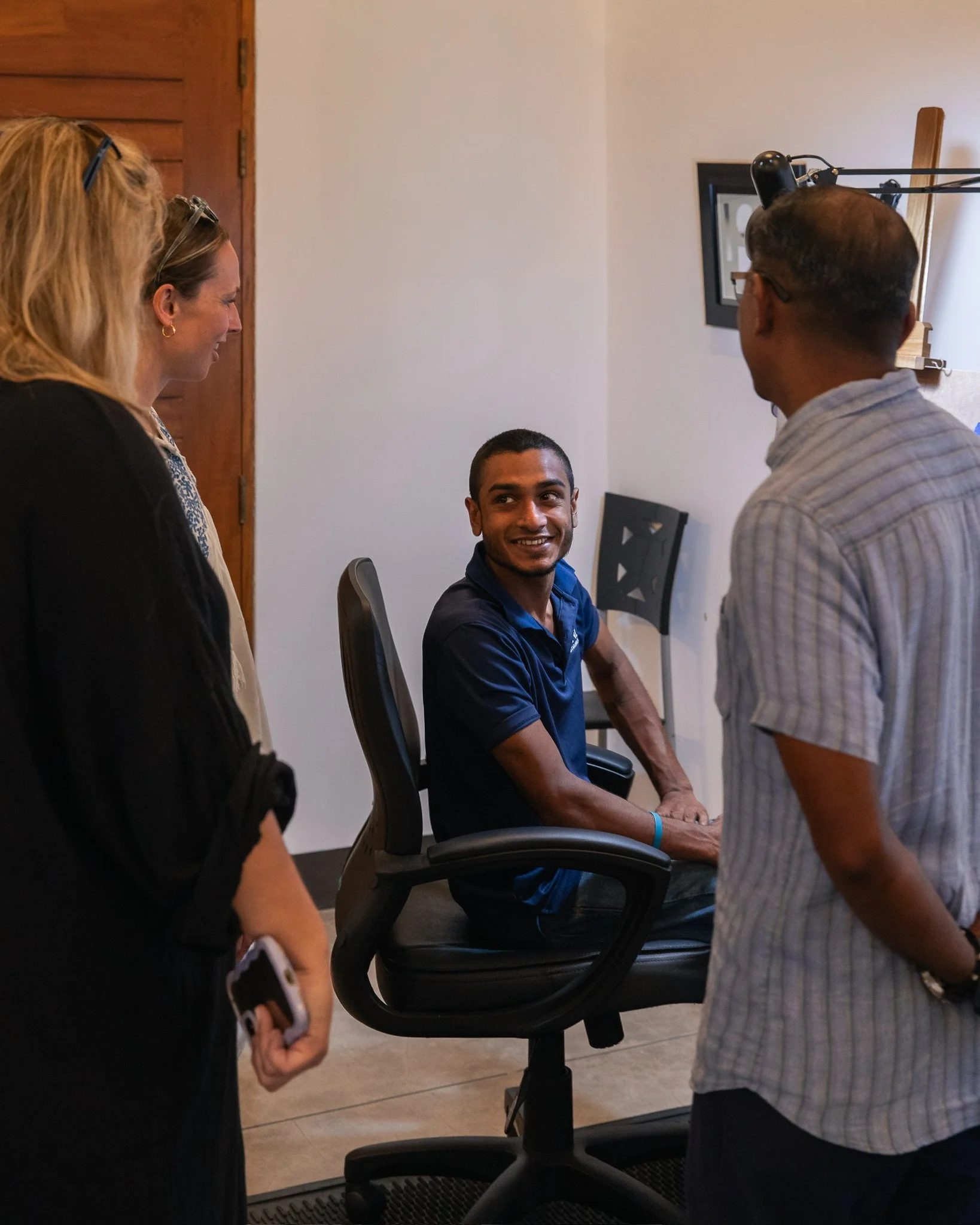DRAWING NEW FUTURES: INSIDE THE ÀNI ART ACADEMIES
During our recent stay with ÀNI Private Resorts in Sri Lanka—partners and sponsors of The Conscious Travel Foundation—we visited the ÀNI Art Academies, a quietly transformative initiative shaping futures through art and education. Tucked inland from Sri Lanka’s southern coast, the academy operates as a working studio for over 50 students, most from underrepresented or underserved backgrounds. All are enrolled on full scholarships, learning the demanding, intricate discipline of photorealism—a form of art that requires patience, precision, and vision.
The model is quietly subversive. Instead of relying on formal qualifications or state-led systems, it places the tools of learning and livelihood directly into the hands of the apprentices—offering not only technical skill, but economic potential, creative expression, and the agency to carve out a future on their own terms.
And the setting? Unassuming, peaceful, and purposeful. Studios framed by rice paddies and palms, the quiet rhythm of charcoal on paper, a distant peacock calling from the treetops. But behind that stillness was something deeply alive: the pursuit of mastery, the power of self-expression, and the quiet confidence of people learning not just how to create, but how to build a life through art.
Founded by ÀNI’s creator, Tim Reynolds—a philanthropist, artist, and fierce believer in the power of education—the academies are more than art schools. They are working studios where talent is honed through discipline, where art becomes both an economic pathway and a form of personal liberation.
Every student at ÀNI Art Academies is there on scholarship. The only entry requirement? A commitment to the process. Age, previous experience, and background do not matter, only that you are a resident in that particular destination. This radical inclusivity allows students like Kushan—who was once turned away from further studies because of a failed maths exam—to find another way forward. He now spends his days immersed in the meticulous technique of photorealism, and his evenings dreaming up fantastical, futuristic worlds in his sketchbooks.
Follow Kushan and view his work
We met Nuwani, now the academy’s Administrative Assistant, who originally joined as a student while studying mathematics. Art, for her, became a release valve, and eventually a calling. As well as translating core texts and videos into Sinhala for fellow apprentices, she’s charting her own path as a practicing artist.
At the heart of the academy’s curriculum is a renaissance-style approach to teaching, pioneered by celebrated Trompe L’Oeil painter, Anthony Waichulis. Rooted in the science of visual perception and the philosophy of “deliberate practice,” it takes students between four to six years to graduate. Apprentices begin with months of precision drawing—spheres, cubes, cones—before ever touching a paintbrush. The method echoes the research of eminent psychologist Anders Ericsson, who argued that expertise isn’t innate, but earned, through deep, focussed, sustained effort.
It is this mindset—of practice over perfection, of grit over giftedness—that seems to shape the soul of the academies. As Rodney O’Dell Davis, dean of ÀNI Art Academies Sri Lanka and a former tech professional who trained under Waichulis in the U.S., told us: “Success feels good because it is hard won.”
“The Royal in the Hatchery” by Nuwani Gunawardhana
What’s unique about the ÀNI model is that it's not only about technical mastery—it’s about creating viable economic futures for artists. Each finished piece, which can take from 3-4 months to more than a year to complete, starts at $500—a life-changing sum in a country where the average monthly income is under $150. And this economic empowerment is not theoretical; it’s happening now. Students are selling their work through exhibitions (like the recent Capturing Realism Asia 2024 in Colombo and the upcoming Mango Art Festival in Bangkok), to collectors visiting ÀNI’s resorts, and through their own growing social media portfolios—QR coded for easy discovery by visitors.
Of course, it’s not without challenges. For some students, financial pressures at home mean they have to leave before completing the programme. But for those who stay the course, the rewards are real—not just in artistic growth, but in independence, confidence, and opportunity. They are becoming teachers, entrepreneurs, gallery owners. They are proof that art is not a luxury—it is a lever for social change.
During our stay, we were joined by several apprentices at the resort for a live sketching session, hosted amongst a gallery of their work and that of their peers. It was a privilege to watch their talent in real time. Students from the academies regularly exhibit their work on-site at the resorts, giving them not only exposure, but direct access to collectors and art enthusiasts from around the world. With resort profits directly allocated to fund the academies, in choosing to stay at ÀNI, guests are actively supporting free, life-changing arts education in communities in Sri Lanka, Thailand, the Dominican Republic, and Anguilla. Across all locations, the mission remains consistent: to equip emerging artists with the tools to build careers and define their own creative paths.
Our stay in Sri Lanka reaffirmed how deeply aligned ÀNI’s mission is with our own. We share a vision: that travel can be conscious, that education is the most enduring form of empowerment, and that creativity, when nurtured, can change lives. What struck us most was how this model gently but powerfully reimagines what education and opportunity can look like. And we left reminded that even the softest of lines, as one student beautifully said, “can make a powerful difference.”
Guests of ÀNI can visit and meet the artists as part of their stay.
Non-ÀNI guests can visit the Art Academies by appointment.
Discover ÀNI Private Resorts
Discover ÀNI Art Academies






